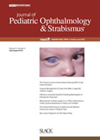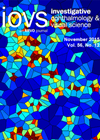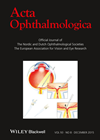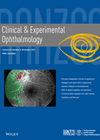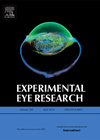Change in infantile exotropia
This study investigated the clinical course of patients with infantile exotropia who initially presented with a small exo deviation of 10-18 prism dioptres. Eighty-six patients were reviewed: 35 with follow-up of >2 years without surgery and 51 with surgery. The...
GA vs. office measures of axial length
Axial lengths were compared in an office setting versus under general anaesthetic (GA) to determine if awake office measures are feasible and whether differences in measures occur in both settings. The study included 33 eyes of 19 children; 84% male,...
Glaucoma management after congenital cataract
The purpose of this study was to retrospectively explore the results of surgical intervention for glaucoma after congenital cataract surgery in Egypt. The study included 41 eyes of 32 children with glaucoma after cataract surgery – 57 procedures; 90% having...
RCT of IOL type
The optical performance of pseudophakic eyes were compared after implantation of spherical and aspheric IOLs in paediatric patients after cataract surgery. This randomised controlled trial included 40 eyes of 23 patients: 20 eyes in each group. Follow-up was over three...
A comparative treatment study of VCZ and liposomal AmpB in an Aspergillus fumigatus endophthalmitis model
This study aims to compare the effects of voriconazole (VCZ) and liposomal amphotericin B (AmpB) in an experimental model of exogenous Aspergillus fumigatus endophthalmitis in a guinea pig animal model. Endophthalmitis was induced by intravitreal injection of a strain of...
Diabetic polyneuropathy and risk of developing diabetic retinopathy
Diabetic polyneuropathy (DPN), diabetic retinopathy (DR) and diabetic nephropathy are widely classified as microvascular complications of diabetes. DPN, which may cause complete sensation loss, is another common complication of DM. The DPN-related diminished sensation presents a significant risk factor for...
Genetic analysis of choroideremia families
Choroideremia (CHM) is a rare X linked recessive chorioretinal dystrophy. Symptoms include nyctalopia and progressive peripheral field loss. Female carriers may have mild symptoms. Choroideremia is known to be caused by a mutation in the CHM gene. A multicentre human...
Ozurdex wound leakage
This letter to the editor describes two cases of wound leakage after Ozurdex injection. The first case is a man who had four previous injections for an underlying diagnosis of chronic serpiginous choroiditis, who was also on a course of...
PD-1 and retinal ganglion cell death
Death of retinal ganglion cells (RGC) in conditions like glaucoma leads to permanent visual loss. RGC death can be due to the initial stress such as raised intraocular pressure or secondary to mechanism such as oxidative stress. Programmed cell death-1...
Differential inhibition of EAU by CTLA4 and IL-6
Cytotoxic T lymphocyte antigen-4 (CTLA4) binds both CD80 and Cd86 and inhibits T lymphocyte activation via CD28. Il-6 is a pleiotropic cytokine that has been associated with many autoimmune conditions including uveitis. Blockade of these molecules by either CTLA4-Ig, a...
Limbal melanocytes and the stem cell niche
The cornea is continually regenerated to maintain clear vision, due to a population of stem cells located in the limbal region between the cornea and the conjunctiva. These limbal stem cells (LESC) reside in crypts in structures called the Pallisades...
Sex differences in the relationship between obesity and choroidal nevus in US adults
The National Health and Nutrition Examination Survey (NHANES); a population-based survey conducted annually in the US by the Centers for Disease Control and Prevention, was used to identify populations at higher risk for choroidal naevus. Over a period of four...


